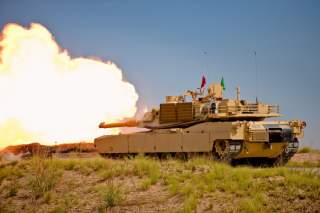This Is How to Make America's Tanks More Lethal on the Battlefield
Making armor great again.
Conclusion:
The joint force benefits most when the army provides well-trained lethal forces of all types. While the detrimental effects of force structure transformation apply to armor and infantry formations alike, the army and the joint force are impacted most by the changes to tank battalions, which provided a niche capability in combat. The United States has nine active duty armored brigade combat teams, and these nine brigades are stretched across the globe, rotating between Europe, Kuwait, and Korea. A “heel-to-toe” rotation of an armored brigade in any location requires three armored brigades; one is deployed, one is training to deploy, and one is recovering from the deployment. All nine armored brigades are obligated, and any contingencies that call for additional armored forces will require strategic trade-offs with deployment length and location.
There is little flexibility in this scarce resource; providing the most capable armored formations to the joint force is critical to the success of these enduring operations, and future contingencies. Threats to U.S. interests are legion, and there are insufficient quantities of armored forces available to deter all of them simultaneously. Modifications to talent management and force structure will reverse the dilution of armored forces, provide a required capability to combatant commanders, and facilitate a return to the lethal tank battalions of the past.
This first appeared in The Strategy Bridge here.
Image: Flickr.

